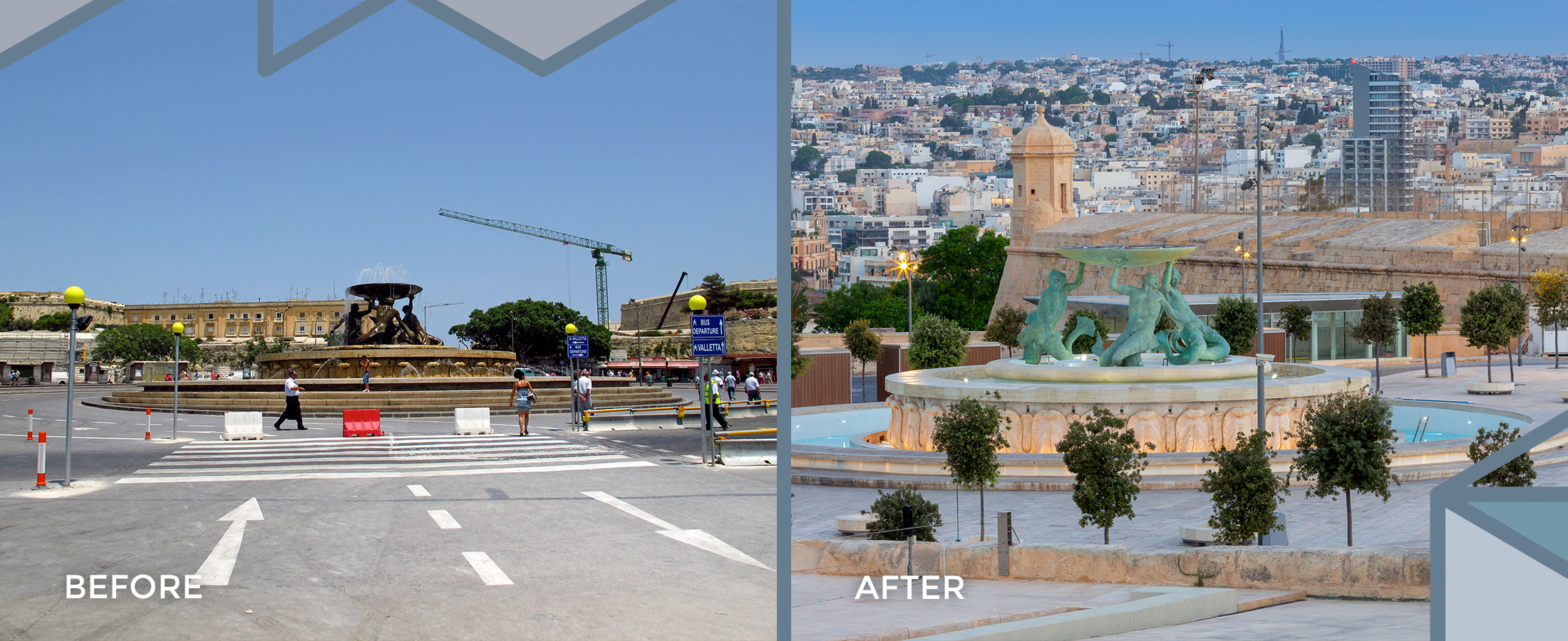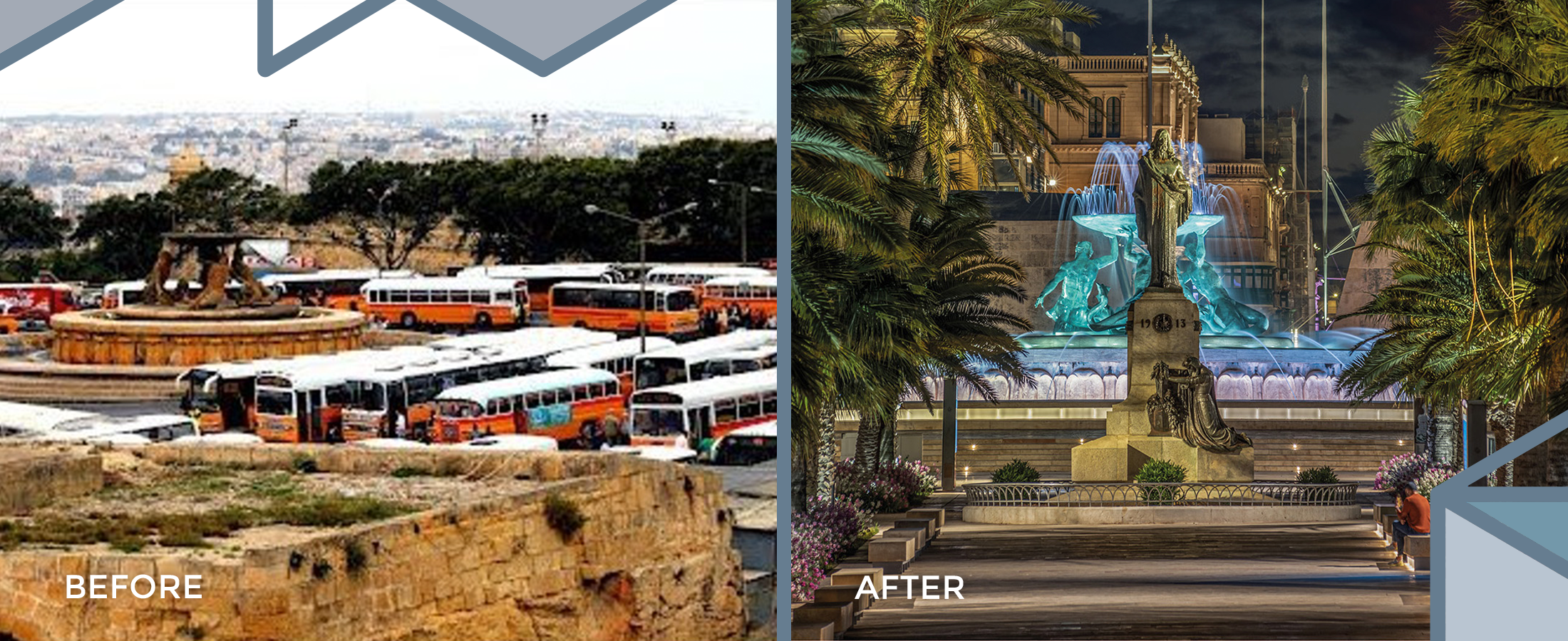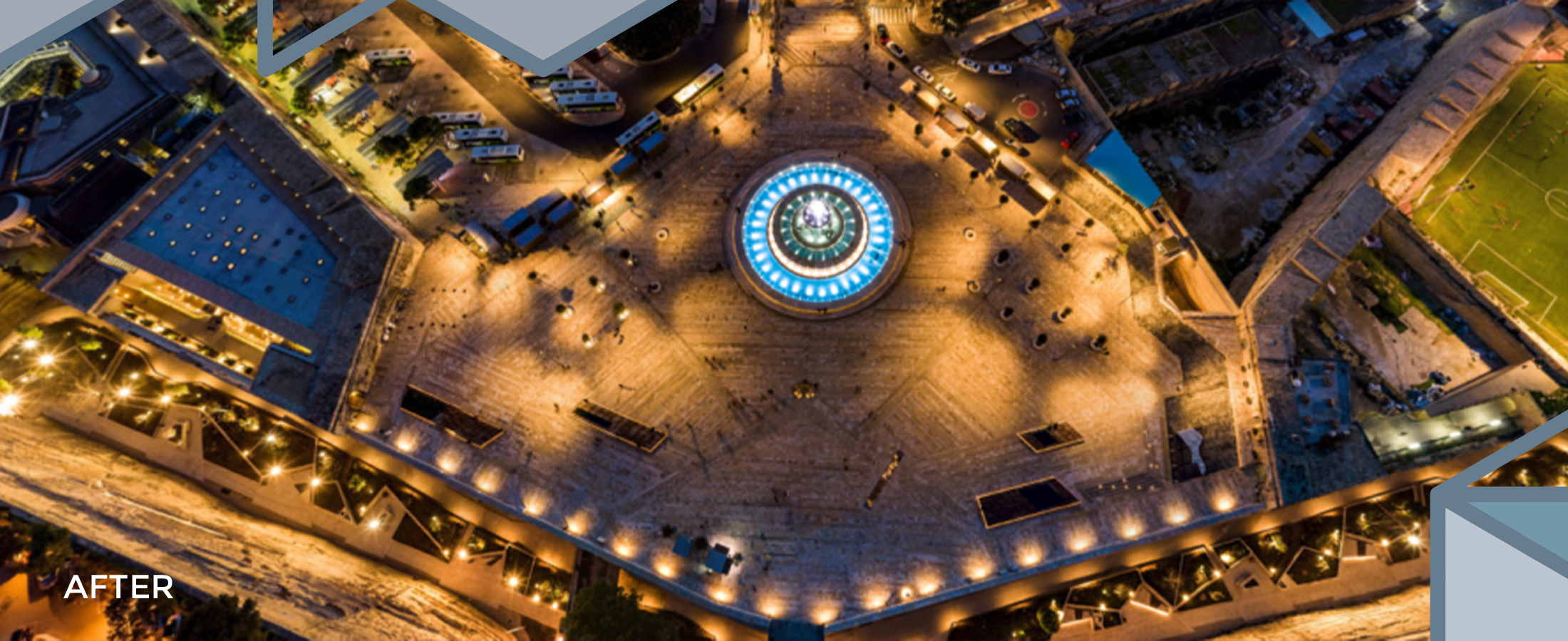Project Description
The main fortifications of Valletta were separated by a deep ditch, and Porta Reale was covered by a Piazza d’Armi and a ravelin. During the 17th century, Valletta’s fortifications were strengthened with the construction of f four counterguards along the landfront, as well as by St. Magdalene’s Ravelin, with a small ditch separated the ravelin and the bonnet on its front. The road leading to Porta Reale passed through a sally port under the glacis and covertway, around the ravelin, through a caponier, onto the Piazza d’Armi and finally across the bridge into the city.
Various alterations and additions were made to the fortifications of Valletta during British rule, including the addition of batteries and gun emplacements. Late in the 19th century, the St. Magdalene’s Ravelin and all of its connected fortifications were cleared, its shallow ditch filled in with the rubble, and the area levelled to a gentle slope running towards Porta Reale.
The new open space served to give a better view when approaching the capital city and part of it was first used as a terminus for the horse drawn omnibus and karozzini. Between 1905 and 1929, the tram system was introduced in Malta. Also in 1905, the first buses were imported. The area outside Porta Reale passed though a number of stages along with the mode of transport, but eventually the route bus won the race.
A series of refurbishments were made to the square and eventually converted as a bus terminus. The jewel of the square was the famous Triton Fountain, which was originally completed in May 1959. This majestic fountain gave the square a different perspective, and which was the first, largest and only kind of an aquatic monument on the island. Part of the embellishment included commuter shelters of glass bricks and ticket booths, which ended converted to kiosks.










